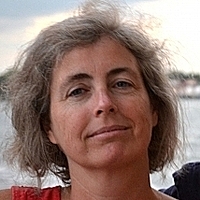Physics and Astronomy/Thayer Plasma Seminar - K A Lynch, Dartmouth College
Title: "Auroral Reconstruction CubeSwarm -- ARCS: A Heliophysics Mission Concept for Decoding the Aurora"
Location
Zoom: https://dartmouth.zoom.us/j/96791994413?pwd=USs5bWlzSWNieTgrL3pRUm1jQndtUT09 Meeting ID: 967 9199 4413 (email for password)
Sponsored by
Physics & Astronomy Department
Audience
Public
Abstract: The physics of high-latitude and auroral mesoscale currents and flow fields is critical to our understanding of how the auroral ionospheric system works. The final link in the magnetic convection cycle is reflected in and possibly governed by these fields and their relation to aurora. These are fundamental processes occurring at all magnetized planets with ionospheres. Recent advances in multispectral auroral imagery, three-dimensional ionospheric modelling, and low-resource cubesats converge in an opportunity for a truly multipoint and heterogeneous study of the auroral ionosphere at mesoscales. The ARCS mission concept would generate novel high fidelity two-dimensional field maps from an in situ cubeswarm in concert with auroral imaging and dense ionospheric tomography.
Using a ~1000 km wide 2D array of dozens of cubesats at F-region altitudes, over a dense grid of multispectral imager sites combined with tomography beacons, ARCS provides a new view; the multipoint insitu, groundbased imagery, and dense tomography data will be used to drive physics-based models for understanding the auroral ionospheric system. We can ask: 1) What are the 2D mesoscale structures in maps of high-latitude and auroral fows and currents, and how do they evolve in time?; 2) How do these 2D maps of ionospheric current and flows self-consistently evolve in conjunction with auroral precipitation? 3) How does the auroral ionosphere work? What are the physical mechanisms regulating the relationships between the flows, currents, and precipitation of the auroral ionospheric system?
An example study using sounding rocket and groundbased observations to drive the three-dimensional GEMINI model illustrates how data from the ARCS mission could be used. This talk presents results quantifying and optimizing the performance of the heterogeneous ARCS mission design, involving the development of an observing system simulation experiment (OSSE). ARCS recently has been selected by NASA for a Phase A Concept Study Report, a process which will take about 9 months.
Location
Zoom: https://dartmouth.zoom.us/j/96791994413?pwd=USs5bWlzSWNieTgrL3pRUm1jQndtUT09 Meeting ID: 967 9199 4413 (email for password)
Sponsored by
Physics & Astronomy Department
Audience
Public
